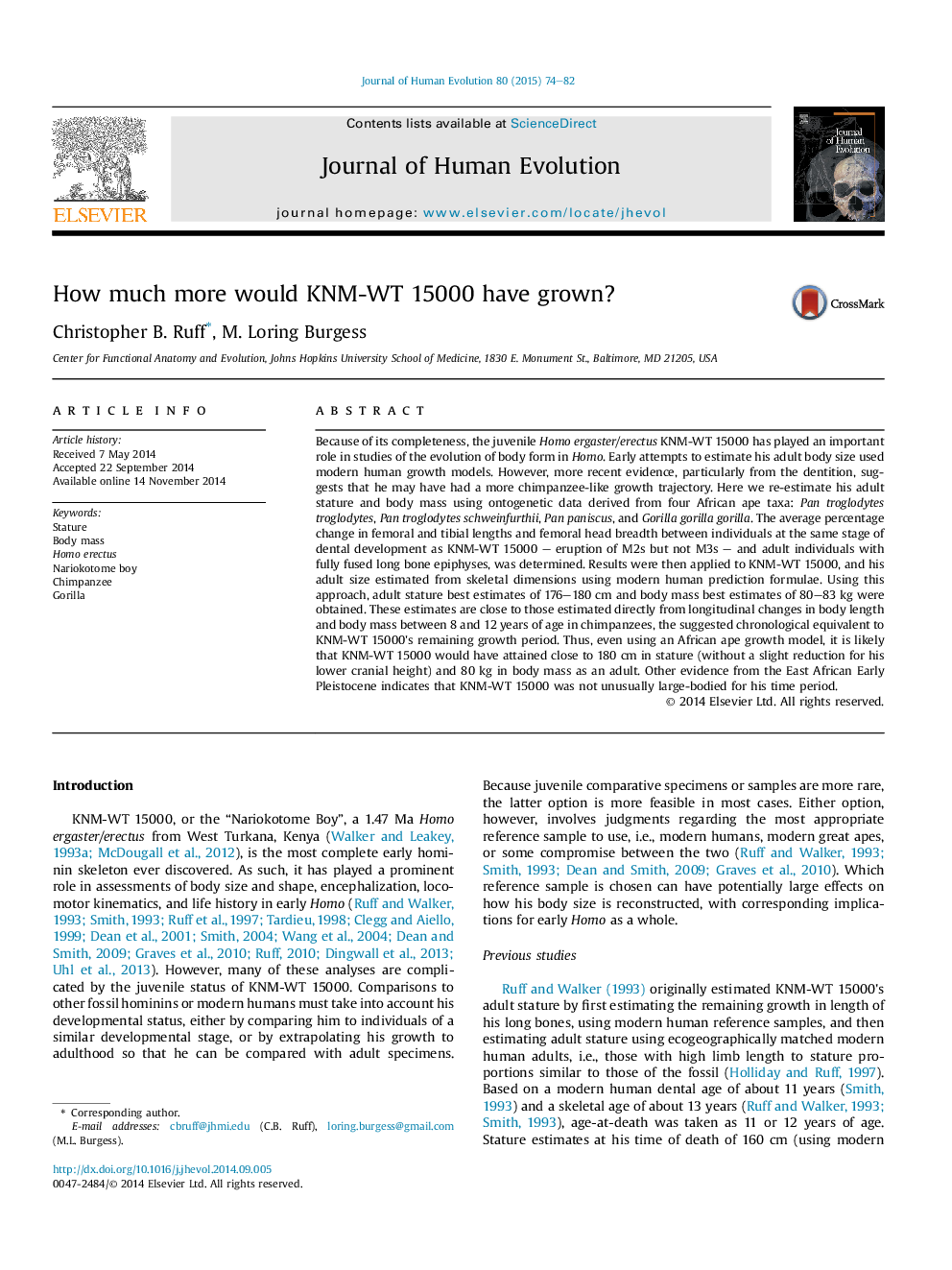| Article ID | Journal | Published Year | Pages | File Type |
|---|---|---|---|---|
| 4555926 | Journal of Human Evolution | 2015 | 9 Pages |
Because of its completeness, the juvenile Homo ergaster/erectus KNM-WT 15000 has played an important role in studies of the evolution of body form in Homo. Early attempts to estimate his adult body size used modern human growth models. However, more recent evidence, particularly from the dentition, suggests that he may have had a more chimpanzee-like growth trajectory. Here we re-estimate his adult stature and body mass using ontogenetic data derived from four African ape taxa: Pan troglodytes troglodytes, Pan troglodytes schweinfurthii, Pan paniscus, and Gorilla gorilla gorilla. The average percentage change in femoral and tibial lengths and femoral head breadth between individuals at the same stage of dental development as KNM-WT 15000 – eruption of M2s but not M3s – and adult individuals with fully fused long bone epiphyses, was determined. Results were then applied to KNM-WT 15000, and his adult size estimated from skeletal dimensions using modern human prediction formulae. Using this approach, adult stature best estimates of 176–180 cm and body mass best estimates of 80–83 kg were obtained. These estimates are close to those estimated directly from longitudinal changes in body length and body mass between 8 and 12 years of age in chimpanzees, the suggested chronological equivalent to KNM-WT 15000's remaining growth period. Thus, even using an African ape growth model, it is likely that KNM-WT 15000 would have attained close to 180 cm in stature (without a slight reduction for his lower cranial height) and 80 kg in body mass as an adult. Other evidence from the East African Early Pleistocene indicates that KNM-WT 15000 was not unusually large-bodied for his time period.
